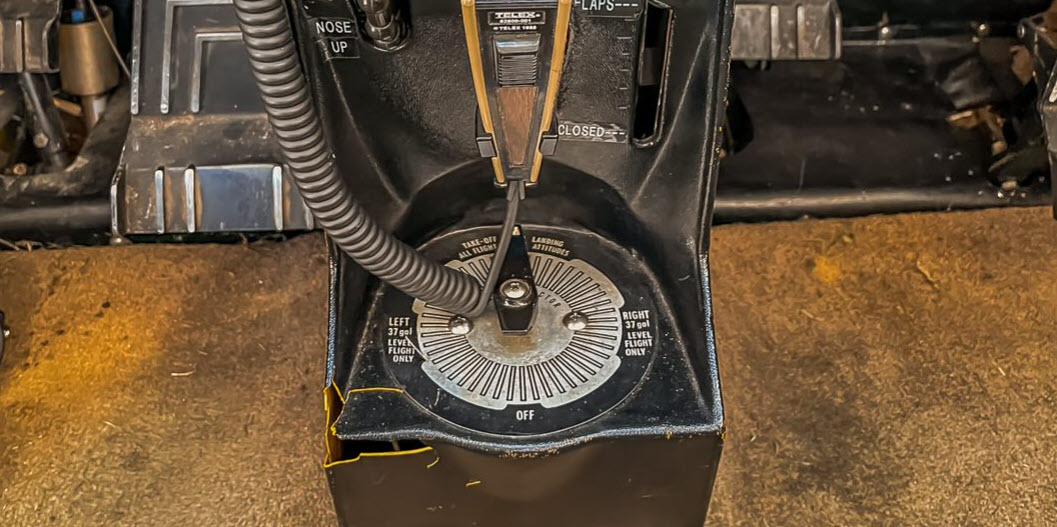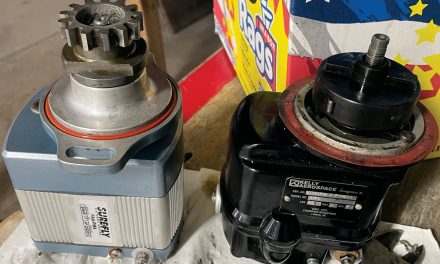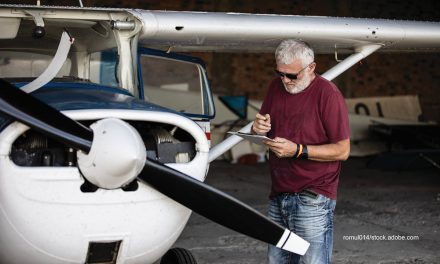Q
New to the COO forum, having just purchased a 1975 C182. I am having the issue where fuel is primarily being drawn from the left tank even though the selector is set to both. I’ll have to check next time I fuel to see if there is a vacuum on the tank. I have run the plane on the right for maybe 10-15 minutes within gliding range of an airport and didn’t have an issue, but I just did a one-hour flight this week and used 11 gallons: 10.6 went into the left tank; 0.4 on the right.
— gladman
A
The Skylane service manual should have service instructions for aligning your underwing vents and also for how to check your vent lines. Vent positioning tolerance is +/- .03 inches from specification (link to PDF provided online). It’s exactly the same as in my Skywagon manual. Or find the appropriate service manual if this one doesn’t apply to your model.
I owned a Lane for years and hung around with other Lane owners. Likely suspects: Vent tube position, caps (leaking gaskets), and mud daubers in the vent (happened on mine). The lines from the fuel pump to each side are not the same total length, and along with minute differences in air pressure across the wingspan, that can result in differential fuel level. I also ran across this while researching your problem, from a 182P owner’s manual:
Fuel is supplied to the engine from two tanks, one in each wing. With the fuel selector valve on BOTH, the total usable fuel for all flight conditions is 60 gallons for the standard tanks. Fuel from each wing tank flows by gravity to a selector valve. Depending upon the setting of the selector valve, fuel from the left, right, or both tanks flows through a fuel strainer and carburetor to the engine induction system.
The fuel selector valve should be in the BOTH position for take-off, climb, landing, and maneuvers that involve prolonged slips or skids. Operation from either LEFT or RIGHT tank is reserved for cruising flight.
NOTE: When the fuel selector valve handle is in the BOTH position in cruising flight, unequal fuel flow from each tank may occur if the wings are not maintained exactly level. Resulting wing heaviness can be alleviated gradually by turning the selector valve handle to the tank in the “heavy” wing.
— Scott Sherer, COO Aviation Director
A
If a vent tube is not in the dead air zone behind the strut, it will pressurize the tank on that side and gas will flow out of that tank before the other. If you happen to find yourself in icing conditions, the mis-positioned vent can ice up, preventing venting and cause loss of fuel flow due to the tank not being vented. Though if you pick up that much ice, a little fuel flow problem likely won’t be your primary concern.
It took me a couple tries to get our vent tubes properly located so that fuel feeds evenly. The positional tolerance is rather small. Note that if you fly out of rudder trim (ball not centered), fuel will never feed evenly.
— hessaero
A
I have had my 1973 182P for over 20 years. When I purchased it, the right tank did not draw fuel very well. It turned out the crossover vent line had about 6 inches of mud daubers restricting the line. I found a coax cable that fit through and pushed them out.
I will still use more fuel out of the left tank due to only having a single vent on the left side. Cessna later went to two fuel vents. On longer cruises, I will switch the fuel selector to the right tank to equal out the fuel in my long-range bladder tanks.
I would check out the crossover vent line before trying to realign the vent inlet behind the strut. Good luck.
— Robert
A
Have you tried the “air bubble in the water” test to ensure the vent line is open and air can go both ways through the line? It’s in my 172 service manual and I’ll bet it’s similar for the 182. I switched to new fuel caps and after a two-hour flight, got some canning noises from the tanks. Turns out I had been flying for about a year (since I bought it) with the underwing vent blocked. The old caps had such a bad seal that they were venting out as well as in. New caps = good seal = air pressure as the air heated up after landing.
The air-bubble test can tell you if the vent line is open both ways and is also used to test whether the crossover vent line is open. Also, old caps with poor seals can allow enough negative pressure to suck fuel out of the tanks (that’s how I found the bad caps), so one or both sides might be contributors to the imbalance.
— merenforth
A
I had a vent-out-of-alignment issue with my 182E. It would vent the fuel out of the pipe in a good, dense spray while flying, and also was very imbalanced flow-wise in the fuel delivery.
Once I started seeing that, I couldn’t stop noticing it. Too bad it happened the third day I owned it, coming home in it from British Columbia. It was the first maintenance I did on it that fall.
We moved it back to spec and, as far as I can tell, that solved that issue. It’s pretty simple to move the vent. Mine was at least 1 inch off. I pulled it out to the service manual spec, tightened the clamp, and was done. It has a paint line from where it was placed before! It must have been like that for a while.
It is now mostly balanced on both; a bit more burns from the left side. I think it may be a bit of a rigging issue as it flies a bit wing-low and the yoke is turned a bit in level flight. To sum it up, all that I can say is that checking the vent to model spec cannot hurt. You can probably do it yourself under supervision of a mechanic if your relationship with him or her allows this.
I seem to remember reading that people put foam rubber under the fairings to help somehow, but I am not sure of the source of that.
— BruceCFVVU
A
Conclusion: Thanks everyone for the help. I am leaning towards the vent alignment after looking at the service manual drawings. I’ll measure it this weekend, but I seem to remember during preflight that the tube definitely leans inboard of the strut by more than the prescribed amount. Again, I appreciate the quick help on this.
— gladman






